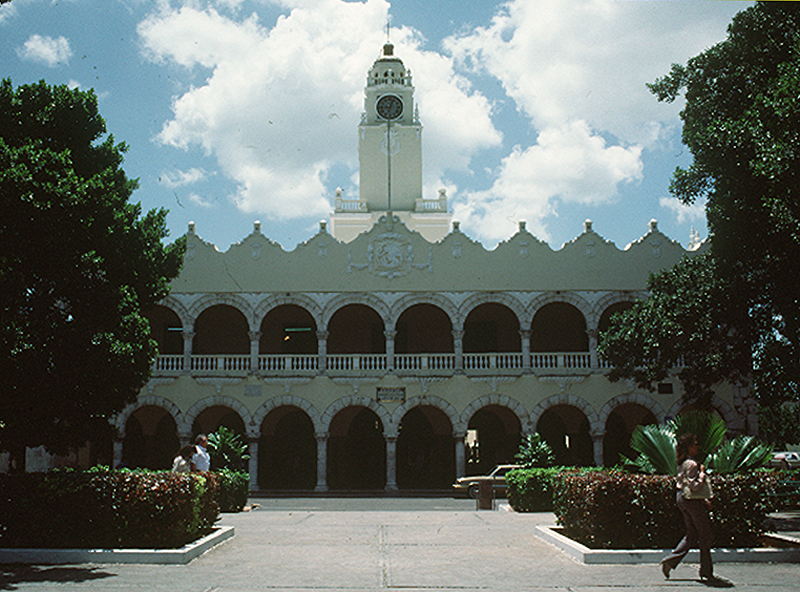Source: Digitized WTL© analog photograph taken on site in Mérida, México.
Comments: This is Mérida's city hall (ayuntamiento). It is located on the Plaza Mayor (central city square). Immediately upon setting up cities in Spain's "new world," the Spanish colonizers used their "old world" (i.e., Spaniksh) urban planning: a town square with city blocks arranged in even rectangles extending in four directions out from the center. On one side of the plaza mayor, they would build the seat of secular government (ayuntamiento: city hall and other government buildings). On another side of the plaza mayor, generally, they would build the main church or cathedral (when a bishop was present in the church). Mérida was founded by Francisco de Montejo (1479-1553; El Adelantado) in 1542. This city was built over the site of a Maya city called T'ho, in which there were five pyramids. Because of the ancient Mayan presence on the land where Mérida is located, many scholars consider Mérida the oldest continually human-occupied city in the Americas. This particular, mostly late baroque or Neoclassical, building dates from the 18th century during the governorship of Santiago Aguirre (1734-1736). However, notice a certain similarity to a style found at Uxmal (=> Uxmal #16). In 1871 the clock was added with the clock tower being added in 1928. In the inner patio (Jardín de los Compositores) there are vestiges of the Mayan pyramid called Bakluum-Chaam.
Latin American humanities question: Describe what you see in this image taking particular note of, possibly, a certain kind of synchretism.


